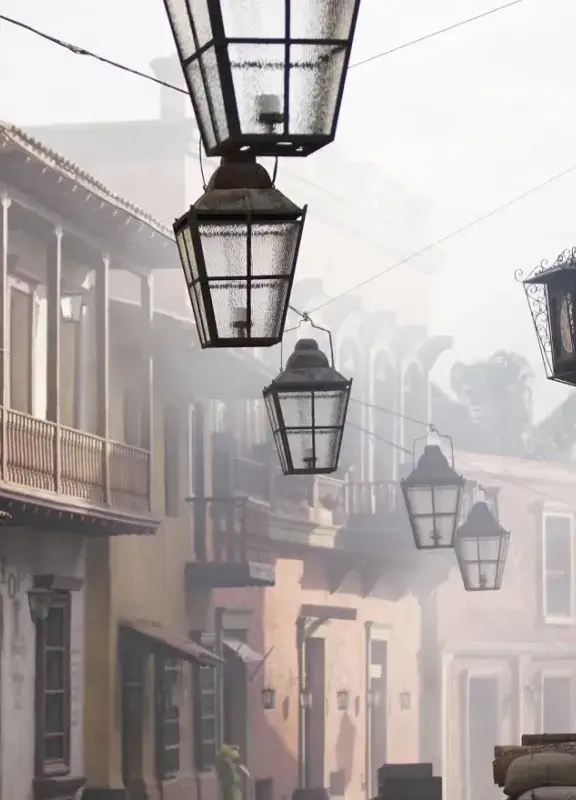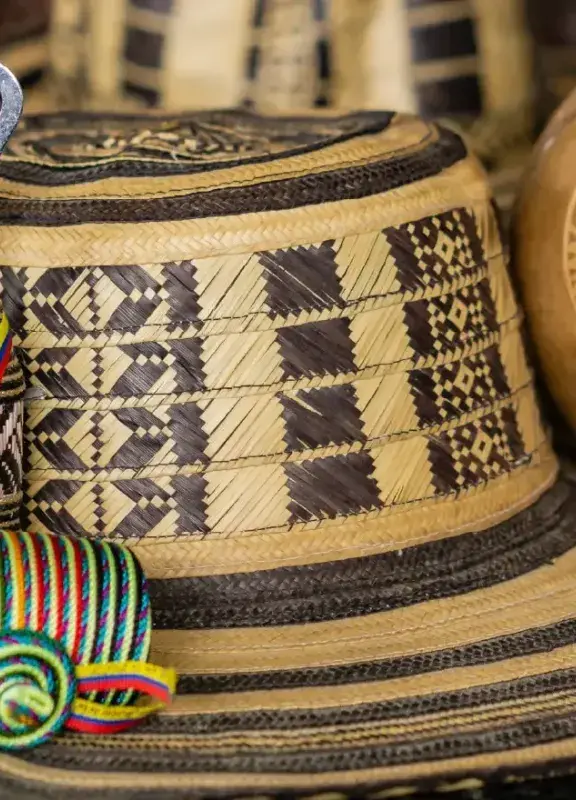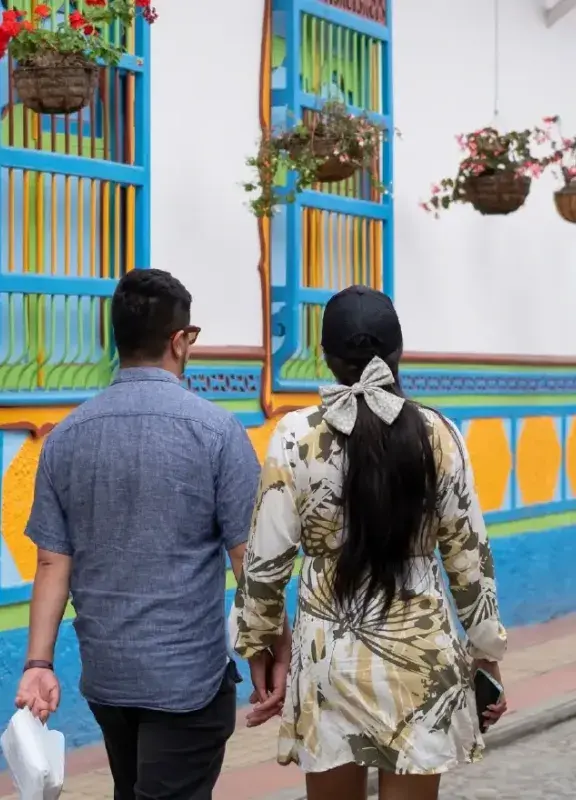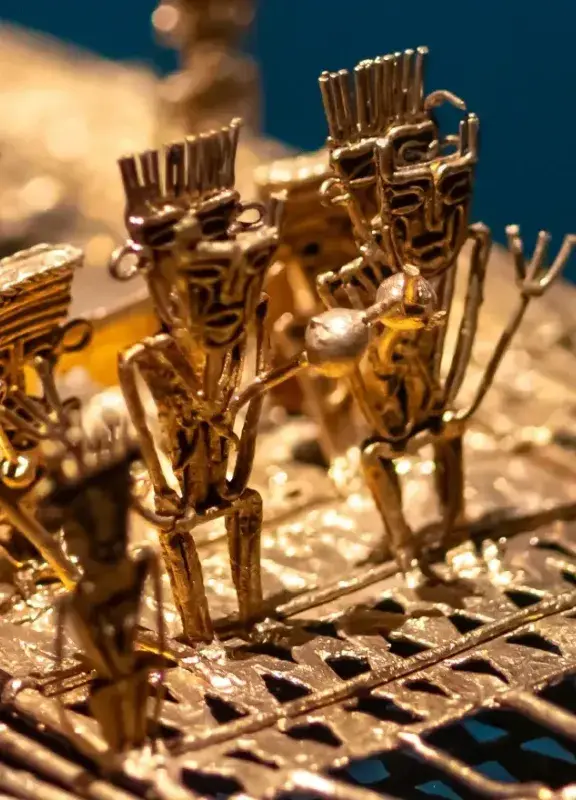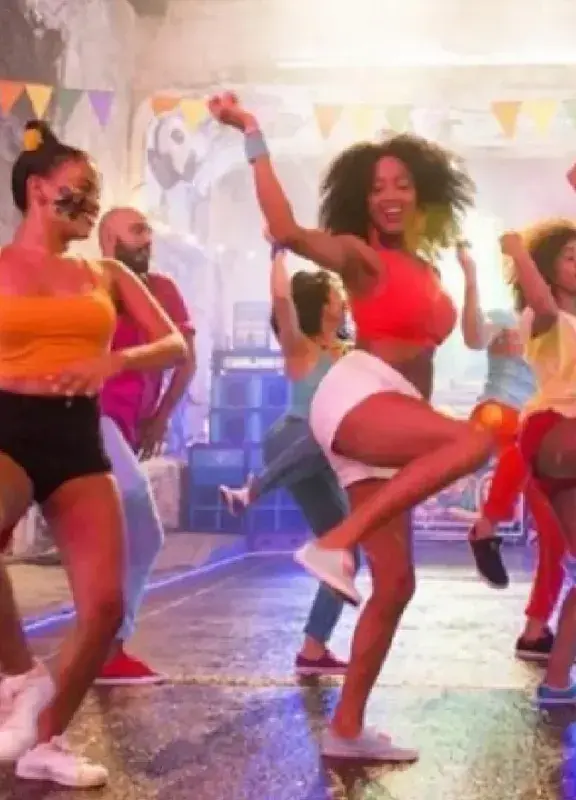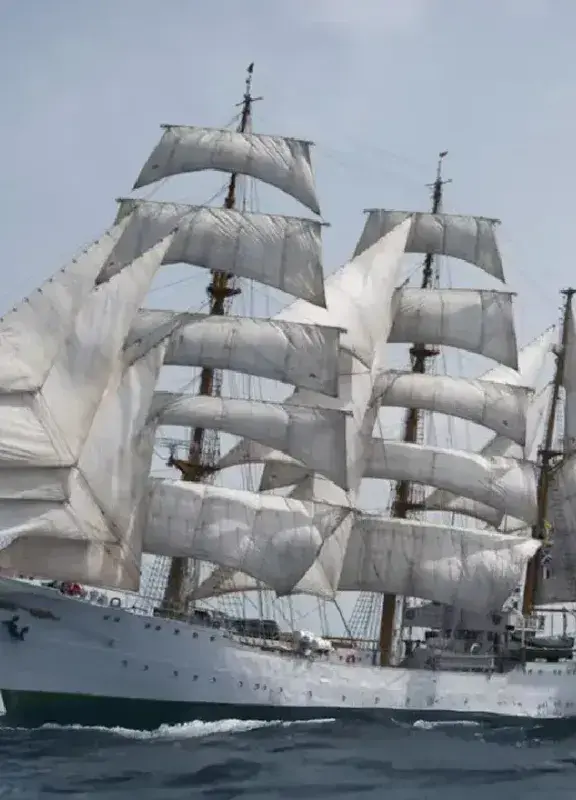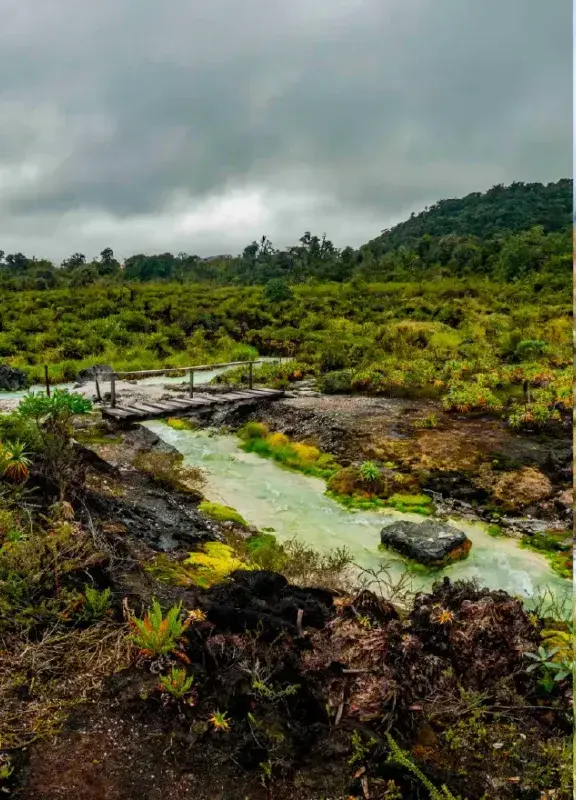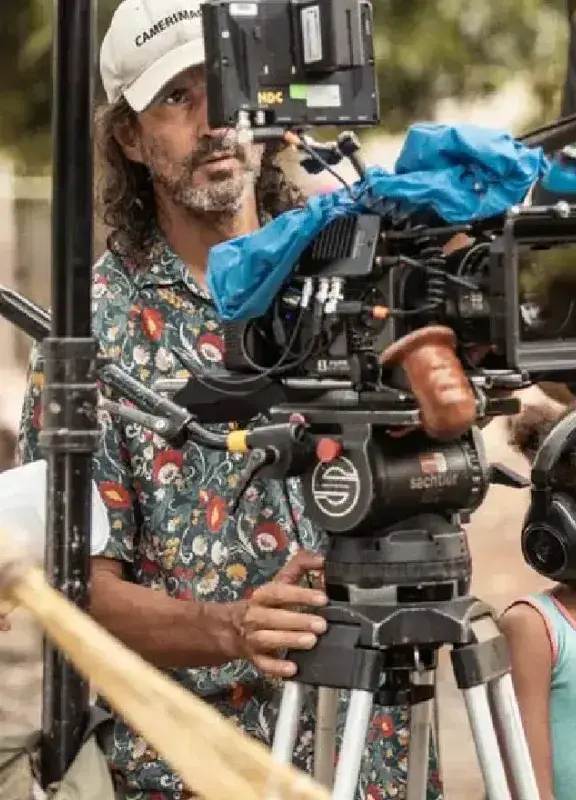Discover Colombia's traditional costumes and cultural diversity
Discover Colombia's traditional costumes and learn about the cultural diversity of each region.
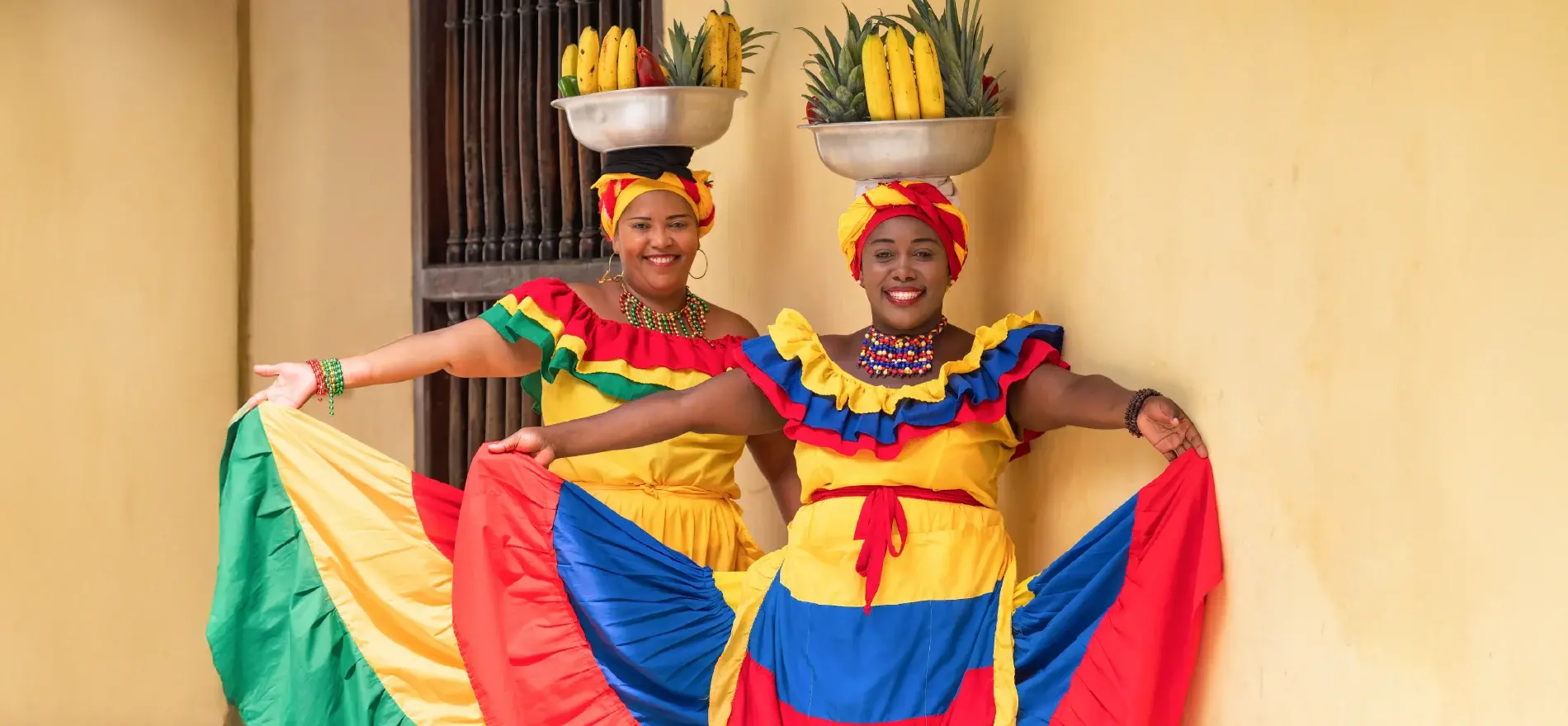
The country of beauty is recognized for its cultural diversity, reflected in its dances, festivals, and traditional clothing. The traditional costumes of Colombia vary according to the region, and each tells a story. From the Carnaval de Barranquilla outfit to the joropo llanero, these cultural expressions enrich the celebrations and preserve traditions that have been passed down from generation to generation. Discover some of them and explore the cultural richness of Colombia.
You may be interested in: Colombian folklore: A journey through the regions of the country of beauty
Gran Caribe Colombiano: traditional costume of the Carnaval de Barranquilla

In the Gran Caribe Colombiano region, one of the most representative traditional outfits is the costume of the Carnaval de Barranquilla, one of the most important cultural festivities in the region and the country. The costumes vary according to the traditional characters, such as the Marimonda, with its characteristic long-nosed mask and bright colors; the Garabato, symbolizing the struggle between life and death with its cape and decorated staff; and the attire of the cumbiambas, where women wear wide skirts and adorned blouses. These folk costumes reflect the cultural diversity, joy, and festive spirit of the Gran Caribe Colombiano.
Andes Occidentales Colombianos: Arriero and Chapolera attire

In the Andes Occidentales Colombianos region, one of the most representative emblematic costumes is the traditional Paisa attire or Arriero’s outfit, symbol of the Eje Cafetero. For men, the clothing includes rolled-up drill pants, long-sleeved shirt, sombrero aguadeño, leather carriel, and espadrilles. For women, the figure of the chapolera, coffee picker, stands out: she wears a white lace blouse, printed skirt, espadrilles, and usually carries a basket for coffee beans. This traditional Colombian costume reflects how tradition is closely tied to the region’s cultural identity and its functionality in rural work.
You may be interested in: The book of warmth - Colombia’s gift to the world
Pacífico Colombiano: traditional salsa costume
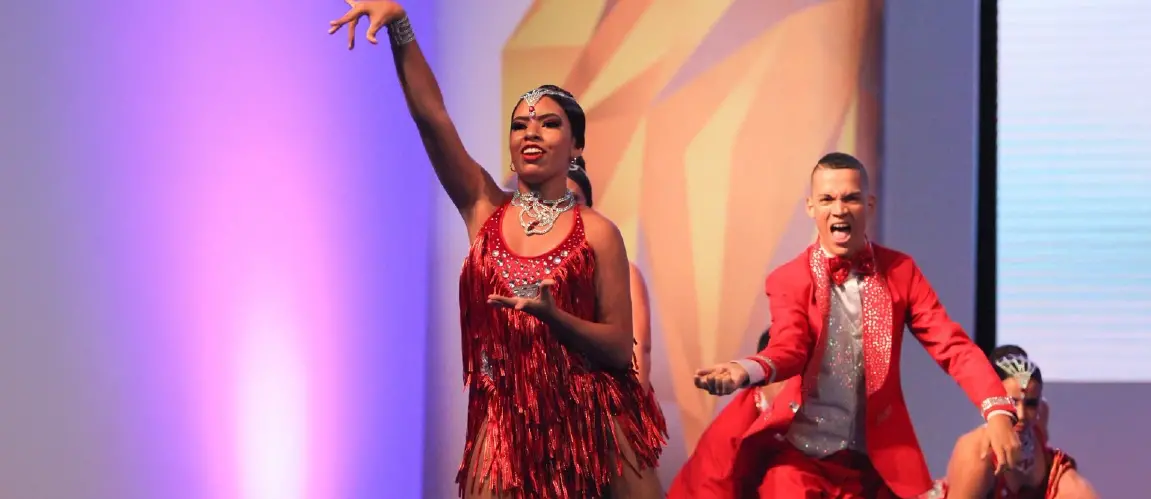
In the Pacífico Colombiano region, especially in Cali, known as the “World Capital of Salsa”, the Colombian outfit for salsa dancing is characterized by its dynamism and striking style. Women often wear short, tight dresses decorated with fringes, sequins, or ruffles that highlight the fast spins and movements typical of Cali-style salsa. Men wear tight or wide pants paired with shirts or t-shirts in vibrant or shiny colors. The choice of light and stretchy fabrics is essential to ensure freedom of movement. This traditional Colombian costume seeks to highlight the figure, energy, and passion that characterize this musical genre and its dancers.
You may be interested in: What to visit in Cali? Basic guide to discover the world salsa capital
Andes Orientales Colombianos: traditional Bambuco costume
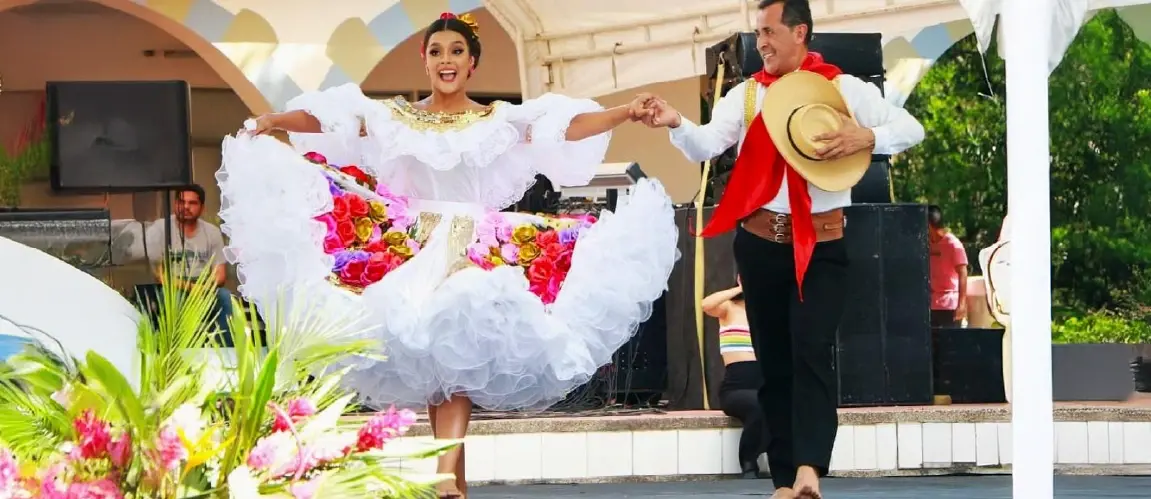
In the Andes Orientales Colombianos region, especially in Boyacá, one of the most emblematic costumes is that of the Bambuco dance, which reflects the peasant tradition and the cultural attire of the area. Women wear wide ankle-length skirts decorated with lace, combined with a white off-the-shoulder blouse with puffed sleeves, usually complemented with flowers or ribbons in the hair and fique espadrilles. Men wear dark trousers, white shirt, red neck scarf, cane hat, and natural fiber espadrilles. This regional clothing is functional for dancing and highlights the elegance of the movements.
Macizo Colombiano: traditional costume of San Juan and San Pedro festivities
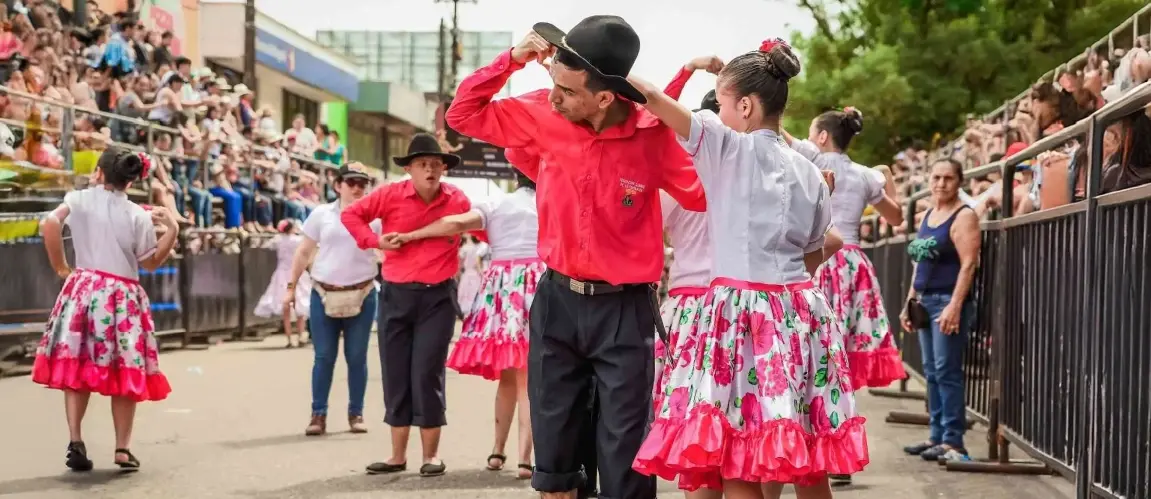
In the Macizo Colombiano, especially in Huila, the festivities of San Juan and San Pedro celebrate cultural richness with the costume of the Sanjuanero Huilense. For women, the attire consists of a fitted white blouse with ruffles, and a mid-length satin skirt with wide flounces decorated with cut-out flowers. The outfit is completed with black shoes. The men’s costume includes a pindo or suaceño hat, red shirt, scarf, cloth or drill pants, and espadrilles. This costume facilitates the stomping and turns of the Sanjuanero, becoming a symbol of identity during these patron saint festivities.
Amazonía – Orinoquía Colombiana: traditional Joropo costume
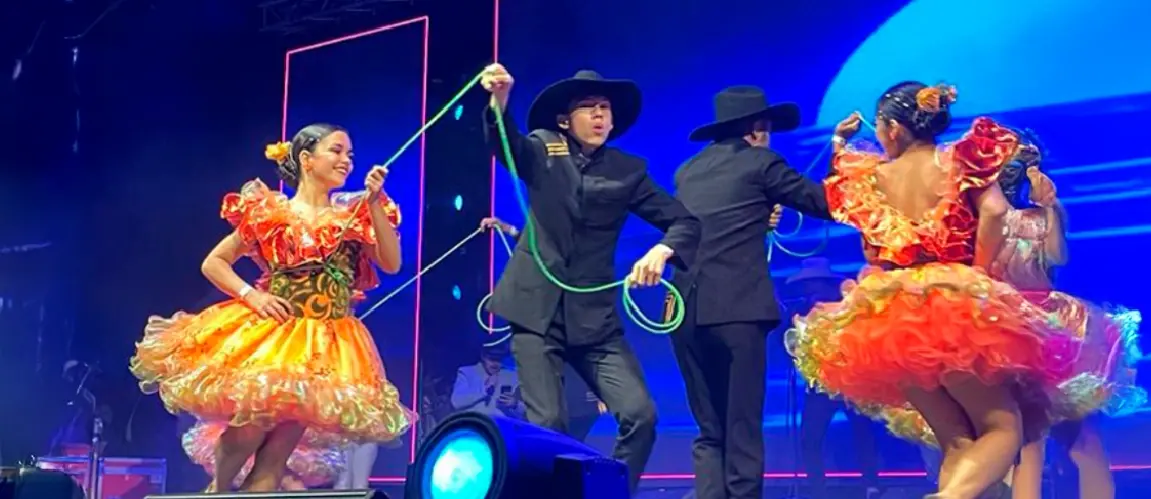
In the Amazonía – Orinoquía Colombiana region, one of the notable traditional costumes is that of the joropo. Women wear a wide ruffled skirt, usually in bright colors or floral prints, adorned with lace or ribbons that highlight each step and spin, accompanied by an off-the-shoulder blouse. Their footwear is espadrilles with thick soles or sometimes barefoot, allowing for strong and rhythmic stomping, typical of this Llanos attire. The men’s costume is characterized by the use of a closed-collar shirt with large buttons, trousers complemented by a Llanero hat, and sometimes rolled-up pants depending on the occasion. This outfit not only allows the freedom of movement necessary for stomping but also reflects the elegance and cultural identity of the Colombian Llanos.
Each traditional Colombian costume varies by region and reflects the country’s cultural and historical diversity. The garments are a living expression of local traditions, ancestral influences, and the festive spirit of each community. These manifestations preserve collective memory and strengthen national identity, highlighting the richness and plurality that define Colombia, the country of beauty.
 Welcome, you are in
Welcome, you are in 



